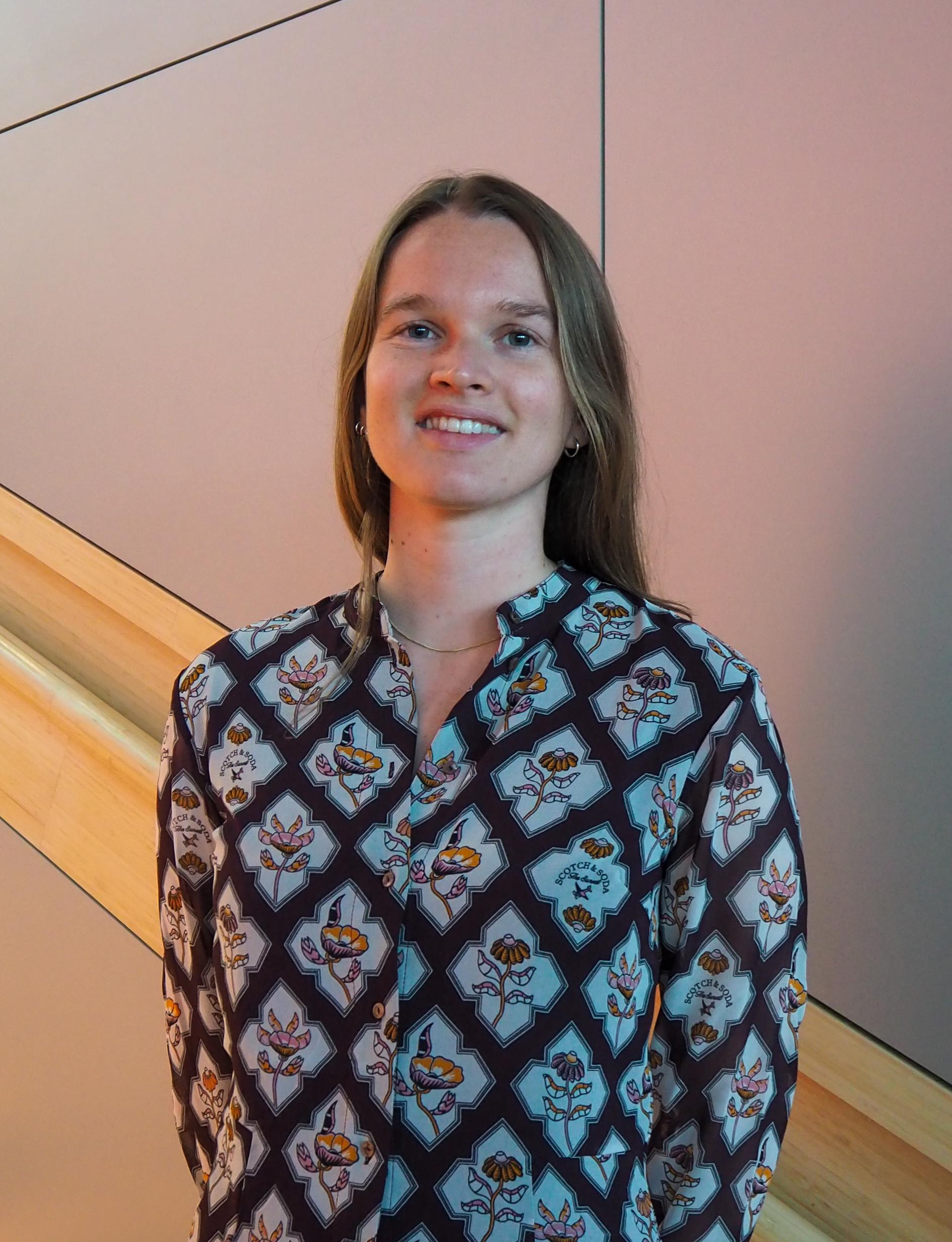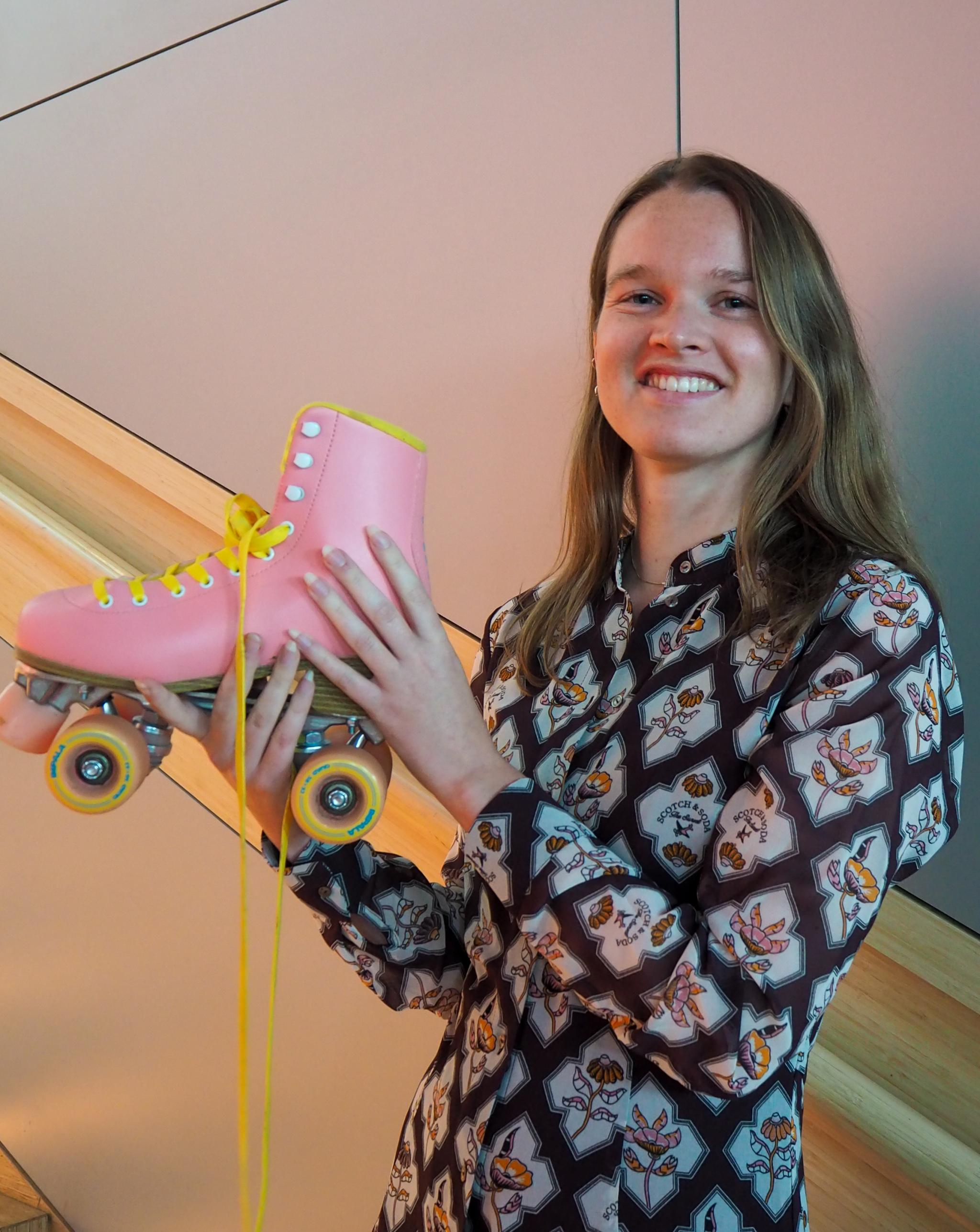It takes multidisciplinary collaboration to address complex modern-day challenges such as monitoring climate change or the removal of space junk. Ideally, this is a skill engineers acquire as part of their education. But what are the characteristics of good collaborative engineering design education, and how can it demonstrably be improved? Gitte van Helden rises to this challenge.
 It is quite an understatement to say that Gitte van Helden is passionate about education, although her focus has shifted over time. As a child, she pretended to be a teacher to her younger siblings. Having become a primary school teacher, she wanted to put her mind to developing educational material. And then, while studying pedagogy, doing research became her thing. She is currently pursuing her PhD at TU Delft, on a topic that is close to her intuition about education. “I believe that interaction with your surroundings is of pivotal importance in learning,” she says. “You don’t learn biology sitting at your desk, you have to go outside and look for critters in ditches and ponds. Likewise, multidisciplinary collaboration is best taught by interacting with different-minded people. Collaborative engineering design education is how students learn to apply their acquired knowledge – in mathematics, physics, programming – in a way matches their future role.
It is quite an understatement to say that Gitte van Helden is passionate about education, although her focus has shifted over time. As a child, she pretended to be a teacher to her younger siblings. Having become a primary school teacher, she wanted to put her mind to developing educational material. And then, while studying pedagogy, doing research became her thing. She is currently pursuing her PhD at TU Delft, on a topic that is close to her intuition about education. “I believe that interaction with your surroundings is of pivotal importance in learning,” she says. “You don’t learn biology sitting at your desk, you have to go outside and look for critters in ditches and ponds. Likewise, multidisciplinary collaboration is best taught by interacting with different-minded people. Collaborative engineering design education is how students learn to apply their acquired knowledge – in mathematics, physics, programming – in a way matches their future role.
Can’t be scripted
“Broadly speaking, in a design assignment, engineering students will first clarify the problem, use that to formulate design specifications, and then formulate potential solutions which they will continue to improve upon,” Gitte says. “But it is impossible to predict when they will run into certain problems in each of these phases, and how they will try to overcome these.” Therefore, design education cannot be scripted. And existing scientific literature is of little help as it typically comes down to case studies: we implemented something in this course to help achieve an educational objective, and our students were quite happy with our improvements. Gitte: “I want to formulate and scientifically validate principles that are generally applicable to collaborative engineering design education – on how you can improve the quality of cooperation, for example, or on how you can implement self-regulated learning.”
My research is about formulating and scientifically validating general principles of good collaborative engineering design education
Collaborative Design Lab
For her PhD research, Gitte resides at the department of Space Engineering at TU Delft. It is where Barry Zandbergen, her daily supervisor, runs the Collaborative Design Lab (CDL) which is inspired by the Concurrent Design Facility of the European Space Agency. The CDL houses a large interactive whiteboard for brainstorming and conceptual design as well as a large variety of conferencing tools. These allow close interaction with everybody present within the lab, and with students and experts at home or on the other side of the world. Gitte: “It’s not that we have mathematicians or mechanical engineers roaming the CDL, but the design problems certainly do require a close collaboration between various disciplines – such as space engineering and structures and materials.”
Critical and supportive
Assisting in the ongoing design courses, Gitte has easy access to both students and teachers. This allows her to enquire about any support they feel they are lacking, and to setup experiments for testing her hypotheses regarding design education. “In the beginning, I was somewhat worried that the Space Engineering teaching staff would think of me as ‘a know-it-all social scientist’, but they are really supportive,” she says. “They themselves continually strive to improve their teaching, and they have all sorts of creative ideas to do just that. So, yes, they are critical of my suggestions, but in a kind and constructive manner.” Over the past half year, the gradual lifting of COVID restrictions has allowed her to spend more and more time on campus. She feels welcome and at home in the group of Aerospace Engineering PhDs. And she also finds support in the other PhDs of the Leiden-Delft-Erasmus Centre for Education and Learning. “In COVID times, we organised homework sessions through Teams. All day long, we could observe the others working in their home environment. And then at 11 o’clock, we would have a coffee break and some chitchat. Now, we can finally meet face-to-face.”
Teaching staff within Space Engineering already has many ideas about improving education
Outside
After 18 months, Gitte is nearing the end of the explorative phase of her PhD. She will now start formulating principles for design education. “I would like to validate these principles outside of the CDL, as I want to make sure they are generally applicable and not only within this particular laboratory,” she says. “I expect to first gather data regarding the current quality of collaboration within a design course. I will then implement certain design principles and repeat data acquisition the following year.” A time-consuming process, so it is a good thing that she has five years to complete her PhD, thanks to her assisting in the ongoing design courses. “I have an additional year to go outside and take strolls through the forest – a much more effective way to come to new insights compared to sitting behind your laptop.”
I want to produce guiding principles that both teachers and students believe in, that makes them say: ‘Okay, let’s do this!’
 Let’s do this
Let’s do this
With COVID restrictions all but gone, Gitte finds it much easier to relax and clear her head. “I meet friends, like to make drawings and I have a pair of old-style roller-skates – the ones with two pairs of wheels and a toe-stop.” She doesn’t expect her research to exactly go according to the plan she made in the first six months of her PhD. And she certainly isn’t busying herself yet with what she will do afterwards. “My first and only priority is to produce guiding principles that both teachers and students believe in, that make them say: ‘Okay, let’s do this!’”
